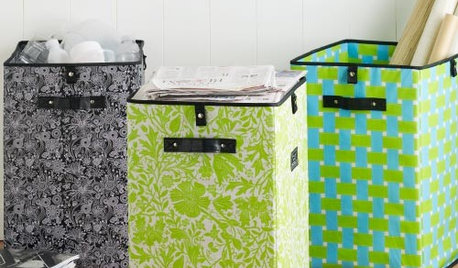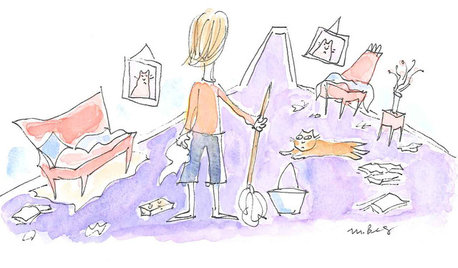feeding a 45gal trash bin flow-thru
moonlocks
15 years ago
Related Stories

GARDENING GUIDESHouzz TV: Make a Worm Bin for Rich Soil and Happy Plants
A worm-powered compost bin that can fit under a sink turns food scraps into a powerful amendment for your garden. Here’s how to make one
Full Story
PRODUCT PICKSGuest Picks: Trash Talkin’
With wastebaskets as attractive as these, you may want to let them out of the corner
Full Story
HOUZZ TOURSHouzz Tour: Major Changes Open Up a Seattle Waterfront Home
Taken down to the shell, this Tudor-Craftsman blend now maximizes island views, flow and outdoor connections
Full Story
GARDENING GUIDESGet on a Composting Kick (Hello, Free Fertilizer!)
Quit shelling out for pricey substitutes that aren’t even as good. Here’s how to give your soil the best while lightening your trash load
Full Story
KITCHEN ISLANDSWhat to Consider With an Extra-Long Kitchen Island
More prep, seating and storage space? Check. But you’ll need to factor in traffic flow, seams and more when designing a long island
Full Story
KITCHEN OF THE WEEKKitchen of the Week: Beachy Good Looks and a Layout for Fun
A New Hampshire summer home’s kitchen gets an update with a hardworking island, better flow and coastal colors
Full Story
MOST POPULAREasy Green: 23 Ways to Reduce Waste at Home
Pick from this plethora of earth-friendly ideas to send less to the landfill and keep more money in your pocket
Full Story
LIFEWe Can Work It Out: Living (and Cleaning) Together
Run a household without fussing and fighting with these ideas for how to work together on household chores
Full Story
ORGANIZINGHelp for Whittling Down the Photo Pile
Consider these 6 points your personal pare-down assistant, making organizing your photo collection easier
Full Story
DECLUTTERINGDecluttering — Don't Let Fear Hold You Back
Sure, you might make a mistake when tackling a decluttering project, but that's OK. Here's why
Full StorySponsored
More Discussions






sbryce_gw
Anisten
Related Professionals
Beavercreek Landscape Architects & Landscape Designers · Fort Lee Landscape Architects & Landscape Designers · Marco Island Landscape Architects & Landscape Designers · Pelham Landscape Contractors · Barrington Landscape Contractors · Glendale Heights Landscape Contractors · Madera Landscape Contractors · Midland Landscape Contractors · New Providence Landscape Contractors · Tehachapi Landscape Contractors · Markham Landscape Contractors · Cibolo General Contractors · Four Corners General Contractors · Meadville General Contractors · Redding General Contractorsmndtrp
susanfromhawaii